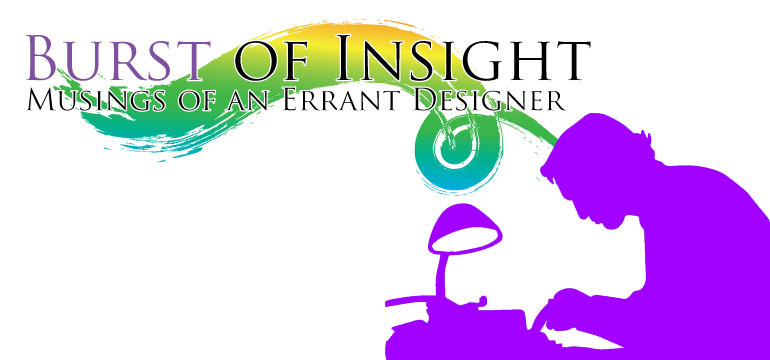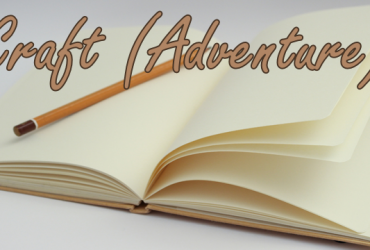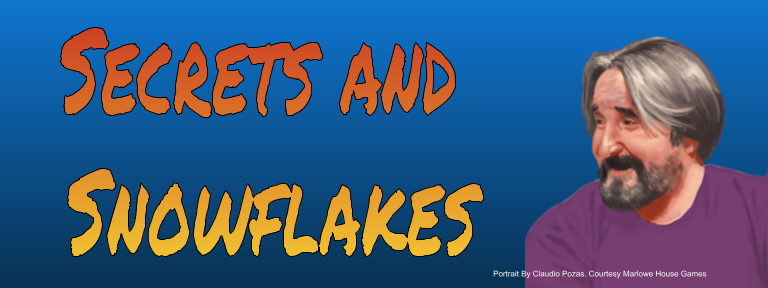So yesterday, I went out and watched Ready Player One. For what it’s worth, I really enjoyed the movie. For me, it hit most of the right beats even if the exact scenes, pop culture nods, and situations the characters faced in the film differed from the book. I felt the moviemakers really leveraged the properties they had the rights to and the strengths of the visual medium to make a good spiritual adaption of the book even if it was not faithful in the details. When choosing to adapt the material in RPGs I tend to approach it in the same way. I want the heart of the material I’m adapting to be preserved even if I don’t get all the mechanical minutiae perfect.
I’ve talked about hacking Pathfinder and using it as the engine to run Supernatural and other pop-culture properties before in this blog. I’ve even talked about porting select rules from other systems to your Pathfinder game to get the right. But, what if I talked about the truly heretical: Porting Golarion to another ruleset.
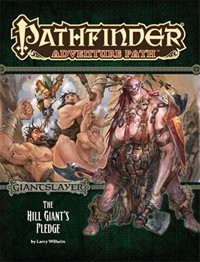 There are a number of reasons you might want to run a Golarion game in a different system. Maybe you have a group of players who are more familiar with the rules of FATE or you really like Starfinder as an update from 1st edition Pathfinder. It could be that you’re ready to try something different for a week or two but you want to keep it connected to your current campaign. It’s this last option that I really want to focus on today but the advice I’m sharing here could be used for any of the above reasons and many more. I touched on this in a prior blog when I mentioned using the RPG Dread to allow the players to role-play through the horrific and tragic backstory of a pair of NPCs from the second volume of the Giantslayer AP.
There are a number of reasons you might want to run a Golarion game in a different system. Maybe you have a group of players who are more familiar with the rules of FATE or you really like Starfinder as an update from 1st edition Pathfinder. It could be that you’re ready to try something different for a week or two but you want to keep it connected to your current campaign. It’s this last option that I really want to focus on today but the advice I’m sharing here could be used for any of the above reasons and many more. I touched on this in a prior blog when I mentioned using the RPG Dread to allow the players to role-play through the horrific and tragic backstory of a pair of NPCs from the second volume of the Giantslayer AP.
Let me begin by saying I trust my players and I subscribe to a philosophy that allowing players to possess information their characters wouldn’t have, can make a game better. I love that modules give GMs all this backstory material but often either through bad rolls or missed opportunities and players never get so much as a glimpse of these backstories. Sometimes you can shake things up and give the player’s a peek behind the curtain by letting them play through past events with pre-generated NPCs.
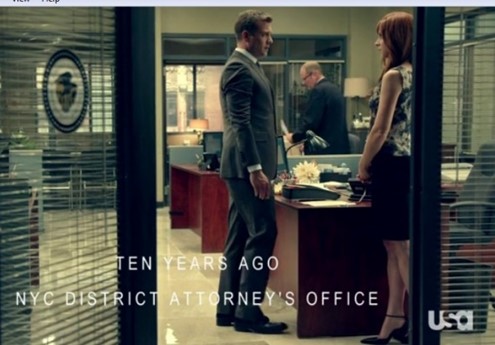
USA’s series Suits uses muted almost green-hued color pallets for its flashback scenes.
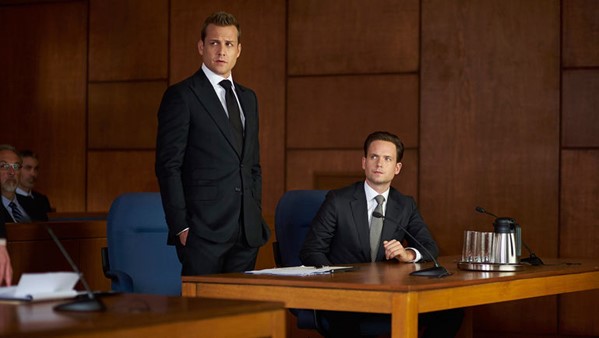
While the bulk of the show uses a normal range of colors for events happening in the present.
I’ve used (playable) flashbacks in games before but more and more I’ve become interested in using alternate systems to run them. Changing the ruleset helps the flashback signal the players that this is different from the main story, like changing the filter on TV and in film signals the audience that the events on screen now, actually happened in the past. But you can’t just slap a scene together and run it in a different system and expect it fly. It still needs to feel like it belongs in the same world as your campaign’s main events. You need to make sure you preserve the feel of Golarion even if the mechanics don’t perfectly mimic Pathfinder’s many subsystems. If things seem too different in narration, it could break immersion.
I’ve begun running Giantslayer and there are a couple of scenes I’d really like to see the player’s handle in flashback. Obviously, I’ve been considering Dread for one of these scenes. The nice thing about dread is that I just need to write the characters and frame the scene there is very little in the Dread rules I’d have to deal with mechanically. But if I want to do other scenes I’d need to find an appropriate ruleset. FATE has a workable starting point with Green Ronin’s Fate Freeport Companion but I recently picked up Fantasy Flight’s Genesys rules (a setting agnostic version of the rules that power the new Star Wars RPGs also from Fantasy Flight) and I might like to try flashbacks in that rules system as well.
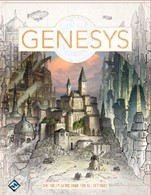 So, I reached out to a GM who was working on converting Pathfinder to Genesys. They wanted to do a full conversion of everything in the Pathfinder rules including every race, class, spell and most of the feats. A colossal undertaking the quickly overwhelmed and ended the project. They wanted to keep the feel of Pathfinder’s play style rather than the feel of the setting. So when I began considering conversion I focused on the world and the fiction. I would adapt the Tales line rather than the RPG line. My focus on the player facing elements was to choose Skills and Talents appropriate to Golarion from those already available and write up a few of the Pathfinder races as Genesys species. That way once I had an outline of how my flashbacks would happen I could focus on adapting the threats the PCs would face.
So, I reached out to a GM who was working on converting Pathfinder to Genesys. They wanted to do a full conversion of everything in the Pathfinder rules including every race, class, spell and most of the feats. A colossal undertaking the quickly overwhelmed and ended the project. They wanted to keep the feel of Pathfinder’s play style rather than the feel of the setting. So when I began considering conversion I focused on the world and the fiction. I would adapt the Tales line rather than the RPG line. My focus on the player facing elements was to choose Skills and Talents appropriate to Golarion from those already available and write up a few of the Pathfinder races as Genesys species. That way once I had an outline of how my flashbacks would happen I could focus on adapting the threats the PCs would face.
Really, for flashbacks, you’ll probably be using pre-generated characters which means you can reduce your workload even further and adapt only what you need for the character’s your designing. You can even rename abilities to better fit the world. I recently did this in preparation for a one-shot Planscape Game intended to be run in the Cypher system renaming types, descriptors, and foci to capitalize on the slang of the setting giving us characters like Miklo the Barmy Tout who Rattles Their Bonebox.
When adapting a game setting to different rules, don’t try to do too much. Adapt only what you need to capture the mood you want. Keep it simple and try not to overwhelm yourself with extra work.

